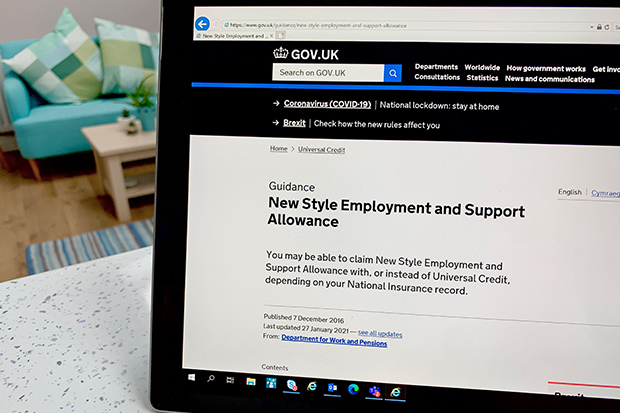PublicTechnology editor Sam Trendall picks out the big issues that might shape the year ahead. Apart from that one.
Credit: iXimus from Pixabay
Every year at around this time PublicTechnology picks out a few trends or issues that we think will define or shape the coming year.
Sometimes we’ve even revisited the article we ran 12 months previously to look at what we wrote and – if it went well – compared it with how things turned out. But, after a quick peek at the December 2019 edition, it transpires that we did not predict the public sector technology world would be most meaningfully shaped by a global pandemic that saw us all locked in our homes for months on end. So, we’ll skip the recap this time.
But, despite that lack of success, we have decided to give it another bash this year – with one caveat: no coronavirus.
It is pretty self-evident that the virus, and the demands it makes on the public sector, will continue to be the main subject of our stories for a fair few more months yet. Indeed, it will be the thing that most shapes all of our lives for that time, and for some time beyond.
But other things will too, and increasingly so.
Below are the four big questions (or, at least four out of five big questions) that we think will define public sector technology and data in 2021.
We look forward to seeing you all next year.
Ofcom vs Facebook – who’s your money on?
Governments around the world have seemed to be somewhat at odds with Facebook – and, to an extent, other social-media firms – ever since the Cambridge Analytica scandal made headlines in 2018.
With Mark Zuckerberg subsequently ignoring a series of (increasingly seething) invites to appear before the Department for Digital, Culture, Media and Sport select committee and explain himself, the argument had begun to seem a little one-sided.
Government took the fight to the Facebook and others a little more with the implementation of the Digital Services Tax. But a levy of 2%, purely on UK revenues, is hardly going to cause a multibillion-dollar-revenue company to start scrabbling behind the sofa cushions for spare change.
The sums of money involved in the potential penalties allowed under the incoming Online Harms Bill, however, might prompt a little more consternation among Silicon Valley CFOs.
The law, to be brought forward next year, allows for Ofcom to fine social networks that fail to fulfil their duty of care to users by removing harmful content, including abuse, terror-related posts, and incitements to self-harm or suicide.
The penalties could be as large as £18m, or 10% of the firm in question’s global turnover; in Facebook’s case, this figure would equate to more than £5bn. Twitter could theoretically face a fine of around £250m.
But several questions remain: what will constitute a major breach of the new law, and how willing will Ofcom be to enforce it to something like the fullest extent possible? Who will be the first to be penalised, and will they fight it?
And, if they do: who would your money be on?
What next for algorithms?
The IT and digital services of the public sector are, fairly frequently, a source of mild irritation for the citizenry it serves. But it is considerably rarer that government tech causes hordes of those citizens to take to the streets in protest.
The A-level and GCSE algorithm fiasco may look – in its scale and severity – like a rare occurrence. But scenes of its like may become increasingly common as the public becomes ever more aware of how predictive tools are making determinations that affect their lives – and ever more uneasy about the decisions being made.
As artificial intelligence and analytics are used in fields such as healthcare, policing, and social services – as well as by the private sector in areas like finance and employment – many have a keen eye on the fairness and functionality of the technology. A government-led review of the issue of bias in algorithmic decision making has already recommended that that “government should place a mandatory transparency obligation on all public sector organisations using algorithms that have an impact on significant decisions affecting individuals”.
The review, conducted by the DCMS-based unit the Centre for Data Ethics and Innovation, also recommended that the government should examine the implications of algorithmic decision-making for the Equality Act, and issue legal guidance on the issue.
It may also need to quell a few more protests along the way.
Will it be a transition impossible?
We might be steering clear of the c-word, but surely you didn’t think we make it through without mention of the B-word?
As the UK’s exit from the European Union moves, on 1 January 2021, from transitional to full-time and permanent, all eyes will be on government to see how it handles the process, and whether its systems cope.
At the start of last month, business leaders in Northern Ireland became the latest in a line of people to voice concerns – “grave concerns”, no less – about the Border IT systems run by HM Revenue and Customs, and whether they will be ready for the end of the transition period.
The Department for Environment, Food and Rural Affairs also has a heavy Brexit-related workload, and early next year is planning to replace the two digital platforms used, respectively, to manage imports and exports.
Defra, at least, seems to be confident about the migration process, with departmental minister Victoria Prentis recently predicted a “smooth and orderly transfer” from the outgoing systems to the new ones.
Other government programmes and services that will be hoping for a similarly stress-free journey into the brave new Brexit world include the Settlement Scheme for EU citizens, and the, as yet unclear, process by which data can be shared between the UK and the remaining 27 member states.
What will happen to the public sector cloud marketplace?
The G-Cloud framework passes its ninth anniversary in February 2021. Its role may have changed significantly by the time it reaches number 10.
From next year, and thereafter, government’s need for cloud-hosting capacity will chiefly be met through other channels. The biggest suppliers, namely Amazon Web Services, Microsoft, Google, IBM, HPE, and UKCloud, each signed a memorandum of understanding with government this year that allowed the public sector to be treated as a single customer, and thereby achieve preferential terms.
The Home Office was quick to take advantage of the AWS agreement, replacing an existing £100m engagement with the vendor with a new, bigger deal signed under the updated terms.
Other public sector organisations will take similar action next year, as well as others who will sign brand new contracts.
Alongside these arrangements with the largest players, the Crown Commercial Service is also to put in place a new framework purely for cloud hosting. The procurement agency has previously indicated that this will essentially replace the equivalent section of G-Cloud.
It is hard to know how these developments will shape and change the landscape for public sector’s use of cloud; it could be argued that more routes through which to adopt cloud computing will help accelerate transformation. Others may, justifiably, harbour concerns that the MoUs and the stand-alone framework could see the market consolidate (even more so) around a small handful of players – not dissimilar to the ‘oligopoly’ of large suppliers that government has spent 10 years trying to break.



